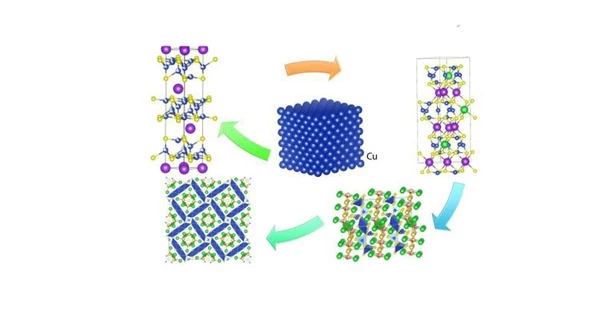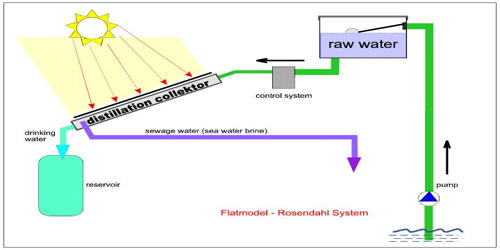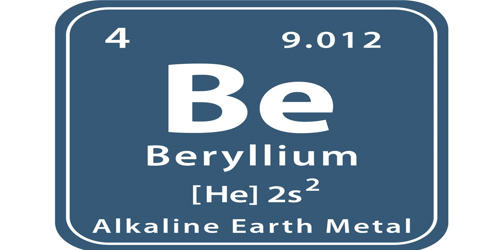Crystalline materials are a class of materials that are characterized by their long-range ordered atomic structure. This type of structure gives them unique properties, such as high electrical and thermal conductivity, that make them useful for a wide range of applications.
One of the most well-known examples of a crystalline material is silicon, which is used in the semiconductor industry to make transistors and other electronic components. The semiconductor industry has enabled many technological advancements that have had a significant impact on our daily lives, such as the development of computers and smartphones.
Another example of a crystalline material is quartz, which is used in the production of glass and in electronic devices such as oscillators and resonators. In addition, quartz also has piezoelectric properties which means it can convert mechanical pressure into electrical energy, this characteristic is used in many piezoelectric sensors such as pressure sensors, accelerometers etc.
A new method for discovering and creating new crystalline materials containing two or more elements has been developed by researchers. Such materials could be used to create next-generation superconductors, microelectronics, batteries, magnets, and other devices.
The best artists in the world can take a handful of different colored paints and turn them into a museum-worthy canvas that looks like nothing else. They do so by drawing on inspiration, historical knowledge, and design principles learned over years in the studio.
We expect that our work will prove extremely valuable to the chemistry, materials and condensed matter communities for synthesizing new and currently unpredictable materials with exotic properties.
Mercouri Kanatzidis
Chemists work in a similar way when inventing new compounds. Researchers at the U.S. Department of Energy’s (DOE) Argonne National Laboratory, Northwestern University, and The University of Chicago have developed a new method for discovering and making new crystalline materials with two or more elements.
“We expect that our work will prove extremely valuable to the chemistry, materials, and condensed matter communities for synthesizing new and currently unpredictable materials with exotic properties,” said Mercouri Kanatzidis, a chemistry professor at Northwestern with a joint appointment at Argonne.
“Our invention method grew out of research on unconventional superconductors,” said Xiuquan Zhou, a postdoc at Argonne and first author of the paper. ”These are solids with two or more elements, at least one of which is not a metal. And they cease to resist the passage of electricity at different temperatures — anywhere from colder than outer space to that in my office.”
Over the last five decades, scientists have discovered and made many unconventional superconductors with surprising magnetic and electrical properties. Such materials have a wide gamut of possible applications, such as improved power generation, energy transmission and high-speed transportation. They also have the potential for incorporation into future particle accelerators, magnetic resonance imaging systems, quantum computers and energy-efficient microelectronics.
The team’s invention method begins with a two-component solution. One of them is a powerful solvent. It dissolves and reacts with any solids that are introduced into the solution. The other is not as effective as a solvent. However, it is present to fine-tune the reaction to produce a new solid upon the addition of different elements. This tuning entails adjusting the ratio of the two components as well as the temperature. The temperature ranges from 750 to 1,300 degrees Fahrenheit.

“We’re not interested in improving known materials; we’re interested in discovering materials no one knew about or theorists imagined even existed,” Kanatzidis explained. “With this method, we can avoid known reaction pathways and follow new paths into the unknown and unpredictable.”
As a test case, the researchers applied their method to crystalline compounds made of three to five elements. As recently reported in Nature, their discovery method yielded 30 previously unknown compounds. Ten of them have structures never seen before.
The team prepared single crystals of some of these new compounds and characterized their structures at UChicago’s ChemMatCARS beamline at 15-ID-D and the X-ray Science Division’s 17-BM-B of the Advanced Photon Source, a DOE Office of Science user facility at Argonne. ”With beamline 17-BM-B of the APS, we were able to track the evolution of the structures for the different chemical phases that formed during the reaction process,” said 17-BM-B beamline scientist Wenqian Xu.
“Traditionally, chemists have invented and made new materials relying only on knowledge of the starting ingredients and final product,” Zhou said. ”The APS data allowed us to also take into account the intermediate products that form during a reaction.”
Another DOE Office of Science user facility at Argonne, the Center for Nanoscale Materials, contributed critical experimental data and theoretical calculations to the project. And this is just the tip of the iceberg, as the method can be applied to almost any crystalline solid. It can also be used to create a wide range of crystal structures. This includes multiple stacked layers, a single-atom thick layer, and unlinked chains of molecules. Such unusual structures have unique properties and are critical in the development of next-generation materials applicable to not only superconductors, but also microelectronics, batteries, magnets, and other applications.
Crystalline materials have also been used to create new technologies that were once considered unimaginable. For example, the development of advanced ceramics, such as those made from silicon nitride and aluminum oxide, has led to the creation of gas turbine engines that are more efficient and durable.
Similarly, recent research in the field of photonics has led to the discovery of new crystalline materials that can be used to create devices such as high-speed optical modulators and high-efficiency solar cells. In the Biomedical field, many drug delivery systems are also based on crystalline materials.
Overall, the unique properties of crystalline materials have enabled many technological advancements that have had a profound impact on our society, and their potential to create new technologies that were once considered unimaginable is still being explored.
















